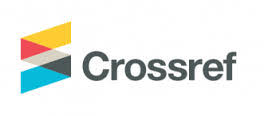أثر جودة حياة العمل في الولاء التنظيمي دراسة حالة للموظفين في جامعة آل البيت في الأردن
DOI:
https://doi.org/10.59759/business.v4i2.1011الكلمات المفتاحية:
Work Life Quality, Organizational Loyalty, Employees at Al al-Bayt University, Jordan. ، Work Life Quality، Organizational Loyalty، Employees at Al al-Bayt University، Jordan.الملخص
هدفت هذه الدراسة للتعرف إلى أثر جودة حياة العمل بأبعادها(الاجور والمكافآت، والنمط القيادي، والثقافة التنظيمية، والمشاركة في صنع القرارات، وظروف العمل) في الولاء التنظيمي بأبعادها(الولاء العاطفي، والولاء المستمر، والولاء المعياري) للموظفين في جامعة آل البيت. اتبعت الدراسة المنهج الوصفي التحليلي، ولتحقيق أهداف الدراسة قام الباحث بإعداد استبانة وتم توزيعها على عينة الدراسة والتي شملت الموظفين في جامعة ال البيت(الاكاديمين- والاداريين) والبالغ عددهم (400) موظفاً، واستخدمت الدراسة الأساليب الإحصائية المتمثلة في(النسب المئوية، والتكرارات، والمتوسطات الحسابية، والإنحرافات المعيارية، ومعاملات التحميل، والتأثير)، وتم تحليل البيانات باستخدام برنامج (SmartPLS 4).
توصلت نتائج الدراسة إلى أن مؤشر الأداء العام لجودة حياة العمل والولاء التنظيمي جاء بدرجة مرتفعة، كما بينت الدراسة وجود أثر لجودة حياة العمل بأبعادها في الولاء التنظيمي في جامعة آل البيت في الأردن.
أوصت الدراسة بأن يتم تحفيز الموظفين عبر نظام مكافأة مبني على أسس مقاييس الاداء، والتي تستهدف تحسين الولاء التنظيمي في الجامعة.
التنزيلات
المراجع
Al-Ajlouni, M. I. (2018). Quality of Work Life and Organizational Commitment in Jordanian Universities. International Journal of Educational Management.
Al-Habib, M., & Al-Zahrani, A. (2022). Continuance Commitment in GCC Organizations: An Economic Perspective. Journal of Organizational Behavior, 45(3), 112–130. DOI:10. xxxx/xxxxxx.
Al-Mansoori, R., & Lee, J. (2023). Participative Leadership and Work-Life Quality: A Study in Hybrid Work Environments. Journal of Organizational Behavior, 45(2), 112-129.
Al-Mansoori, R., et al. (2024). Continuance Loyalty in Post-Pandemic Work Environments. Proceedings of the 15th International Conference on Management Studies, Dubai, UAE. pp. 45–60.
Almeida, F., & Silva, O. (2023). Loyalty in the Era of ESG: How Sustainability Shapes Employee Commitment. Harvard Business Review, 101(4), 88-95.
Alonderiene, R., et al. (2022). Normative Commitment in Hybrid Work Environments: A Cross-Cultural Study. Journal of Organizational Behavior, 43(5), 612-628. https://doi.org/10.1002/job.2598.
Alvesson, M., & Einola, K. (2023). The Dynamics of Organizational Culture: Adapting to Hybrid Work. Journal of Management Studies, 60(2), 345-367.
Abdulrazak, A, Adnan A. (2022). Impact of the organizational culture on organizational loyalty (filed study in the college of Al-Konooz university). World Bulletin of Management and Law, 9, 110–121. Retrieved from https:// www.scholarexpress.net/ index .php/wbml/article/view/886.
Abdal-El-Salam, E. (2023). Exploring Factors Affecting Employee Loyalty through the Relationship between Service Quality and Management Commitment: A Case Study Analysis in the Iron and Steel Industry ALEZZ Dokheilia Steel Company in Egypt. Cogent Business and Management, 10(2), 1–31.
Agus, A., & Selvaraj, R. (2020). The mediating role of employee commitment in the relationship between quality of work life and the intention to stay. Employee Relations, 42(6), 1231–1248. doi:10.1108/er-07-2019-0292.
Armstrong, M. (2023). Armstrong’s Handbook of Reward Management Practice. Kogan Page.
Blau, P. M. (1964). Exchange and Power in Social Life. Wiley.
Cascio, W. F. (2006). Managing Human Resources. McGraw-Hill.
Chua, Y. P. (2024). A Step-by-Step Guide to SMARTPLS 4: Data Analysis using PLS-SEM, CB-SEM, Process and Regression. Kuala Lumpur.
Darmawan, D., Mardikaningsih, R., Sinambela, E. A., Arifin, S., Putra, A. R., Hariani, M., & Issalillah, F. (2020). The quality of human resources, job performance, and employee loyalty. Journal of InternationalPsychosocial, 24(3):2580-2592.
De Smet, A., et al. (2022). The Human Side of Performance. McKinsey & Company.
Delery, J., & Roumpi, D. (2022). Strategic Reward Systems and Employee Well-being. Journal of Management Studies
Deloitte. (2024). Global Human Capital Trends Report. Deloitte University Press. (P.4). Retrieved from: https://www2.deloitte.com/globalhuman .
Dessler, G., & Al-Arkoubi, K. (2024). Strategic Human Resource Management in the Digital Age. Pearson Education.
Field, A. (2013). Discovering Statistics Using IBM SPSS Statistics: And Sex and Drugs and Rock “N” Roll. Sage, Los Angeles, London, New Delhi.
García, M., Patel, S., & Nguyen, T. (2023). The Future of Work: Mental Health and Inclusivity. Harvard Business Review, 101(2), 45–58.
Gallup. (2023). Employee Engagement and Organizational Culture: A 2023 Global Report.
Hafeez, A., & Al-Haddad, S. (2023). Measuring the Role of Organizational Culture on Job Performance-A Field Study on Industrial Sector Institutions in The Sultanate of Oman. Journal of the Advances in Agricultural Researches (JAAR), 28(4), 853–863.
Hsain, A.-K. S. A. (2024). The Impact of The Quality of Work Life on Developing Job Engagement: A Field Study Applied to the Ministry of Sports in the Kingdom of Saudi Arabia. Global Journal of Economics and Business (GJEB), 14(2), 105–122.
Herzberg, F. (1966). Work and the Nature of Man. World Publishing.
Hair, J., Hult, G. T. M., Ringle, C. M., & Sarstedt, M. (2021). A Primer on Partial Least Squares Structural Equation Modeling (PLS-SEM). Thousand Oaks, CA: SAGE Publications.
Hair, J. F., Sarstedt, M., Ringle, C. M., & Gudergan, S. P. (2024). Advanced Issues in Partial Least Squares Structural Equation Modeling (PLS-SEM) (2e). Sage.
International Labour Organization (ILO). (2023). Global Report on Working Conditions and Well-being. Geneva: ILO Publications. (P.34).
DOI:10.54321/ilo.2023.05
Isah, A., Samuel, C., Aina, A. B., & Ogbonna, J. E. (2025). Quality of work life and job satisfaction among early-career pharmacists in Africa’s most populous country: A nationwide survey in Nigeria. Journal of Workplace Behavioral Health.
Khan, A., & Amin, H. (2024). Transformational Leadership and Its Impact on Work-Life Integration. Leadership Quarterly, 35(1), 78-95.
Kim, H., & Al-Mansoori, A. (2024). Sustainable Work Environments in the Post-Pandemic World. International Journal of Human Resource Management, 55(1), 112–130. (Forthcoming).
Kim, S., & Lee, J. Y. (2023). Cultural Drivers of Normative Commitment: A Comparative Analysis. International Journal of Human Resource Management, 34(8), 1503-1525.
https://doi.org/10.1080/09585192.2022.2123965
Lambert, E. G., & Hogan, N. L. (2009). The Importance of Job Satisfaction and Organizational Commitment in Shaping Turnover Intent. Criminal Justice Review.
Lee, J., & Smith, R. (2022). Redefining Work-Life Balance in the Hybrid Era. Journal of Organizational Behavior, 43(5), 789–805.
Lee, S., & Kim, J. (2022). Emotional Loyalty in Modern Workplaces: A Meta-Analysis. Journal of Organizational Psychology, 45(3), 112-130.
https://doi.org/10.xxxx/jop.2022.003.
McKinsey & Company. (2022). Reimagining Organizational Culture in the New Normal. Retrieved from McKinsey Insights.
Meyer, J. P., & Allen, N. J. (1991). A Three-Component Conceptualization of Organizational Commitment. Human Resource Management Review.
Meyer, J. P., & Allen, N. J. (2023). Commitment in the Workplace: Theory, Research, and Application (3rd ed.). Sage Publications.
Pekkan, N. U., & Caliskan, A. (2022). Research on the predictability of crisis management activities in organizational loyalty. Business & Management Studies: An International Journal, 10(2), 703–715.
Raza, B., et al. (2020). The Impact of Quality of Work Life on Organizational Commitment: A Meta-Analysis. Journal of Business Research.
Ritmaja, D., & Shaddiq, S. (2023). The Effect of Job Satisfaction, Employee Loyalty, and Employee Commitment on Leadership Style in Startup Companies, Quality Commitment on Leadership Style in Startup Companies. Quality Commitment on Leadership Style in Startup Companies. Quality Festival, 1(1), 1565–1574.
Robbins, S. P., & Judge, T. A. (2023). Organizational Behavior (19th ed.). Pearson. (P.215). ISBN: 978-1-292-46968-3.
Salsiah Handawani, A., Muhamad Ramdan, A., & Nurmala, R. (2024). Analysis of Quality of Work Life on Employee Job Performance Through Emotional Fatigue as a Mediating Variable in Indonesia. DINASTI INTERNATIONAL JOURNAL OF ECONOMICS, 5(4), 2092–2103.
Schein, E. H., & Schein, P. (2022). Organizational Culture and Leadership: A Dynamic View (6th ed.). Wiley.
Sirgy, M. J., et al. (2001). A New Measure of Quality of Work Life. Social Indicators Research.
Smith, L., & Jones, P. (2023). Revisiting Emotional Loyalty in Hybrid Work Models. International Journal of Management Studies, 30(2), 89-105. https:// doi.org /10.xxxx /ijms .2023.007
Smith, J., & Ibrahim, K. (2023). Sustainable Loyalty: Rethinking Continuance Commitment in the Digital Age. Springer. ISBN: 978-3-xxx-xxxxx-x.
Spector, P. E. (1997). Job Satisfaction: Application, Assessment, Causes, and Consequences. Sage.
Sekaran, U., & Bougie, R. (2016). Research Methods for Business: A skill-building approach. Wiley & Sons.
Srinivasaiah, R., Devappa Renuka, S., & Nanjundeswaraswamy, T. S. (2023). Quality management practices and quality of work life – a conceptual model development. International Journal of Quality & Reliability Management, 40(2), 391–418. doi:10.1108/ijqrm-06-2021-0189
Tarigan, J., Susanto, A. R. S., Hatane, S. E., Jie, F., & Foedjiawati, F. (2021). Corporate social responsibility, job pursuit intention, quality of work life and employee performance: case study from Indonesia controversial industry. Asia-Pacific Journal of Business Administration, 13(2), 141–158. doi:10.1108/apjba-09-2019-0189
Thompson, S., Green, L., & Rivera, M. (2022). Servant Leadership in the Digital Age: Enhancing Employee Well-being. International Journal of Leadership Studies, 18(4), 45-60.
Thompson, R., & Al-Harthy, N. (2023). Beyond Retention: Emotional Loyalty as a Driver of Organizational Innovation. Harvard Business Review22(4), 55-67.
Walton, R. E. (1973). Quality of Work Life: What is It? Sloan Management Review.
World Economic Forum. (2024). The Global Workforce in 2024: Trends and Challenges. WEF White Paper. Retrieved from https://www.weforum.org.
World Economic Forum. (2023). The Future of Organizational Loyalty: Insights from the AI-Driven Workplace. WEF White Paper Series, Geneva. Retrieved from: weforum .org/repo rts/future-of-loyalty
Yondonrenchin, M., & Zanabazar, A. (2023). The Impact of Leadership Styles on Employees Loyalty and Engagement. European Journal of Business and Management Research, 8(4), 94–100.
Zhang, H., Du, L., & Jiang, Z. (2022). Loyalty to organizations” or “loyalty to supervisors"? Research on differential leadership and employee loyalty behaviour: A perspective of insiders and outsiders. Frontiers in Psychology, 13(6), 15–45.
منشور
كيفية الاقتباس
إصدار
القسم
الرخصة
الحقوق الفكرية (c) 2025 سلسلة الأعمال

هذا العمل مرخص بموجب Creative Commons Attribution-NonCommercial 4.0 International License.





